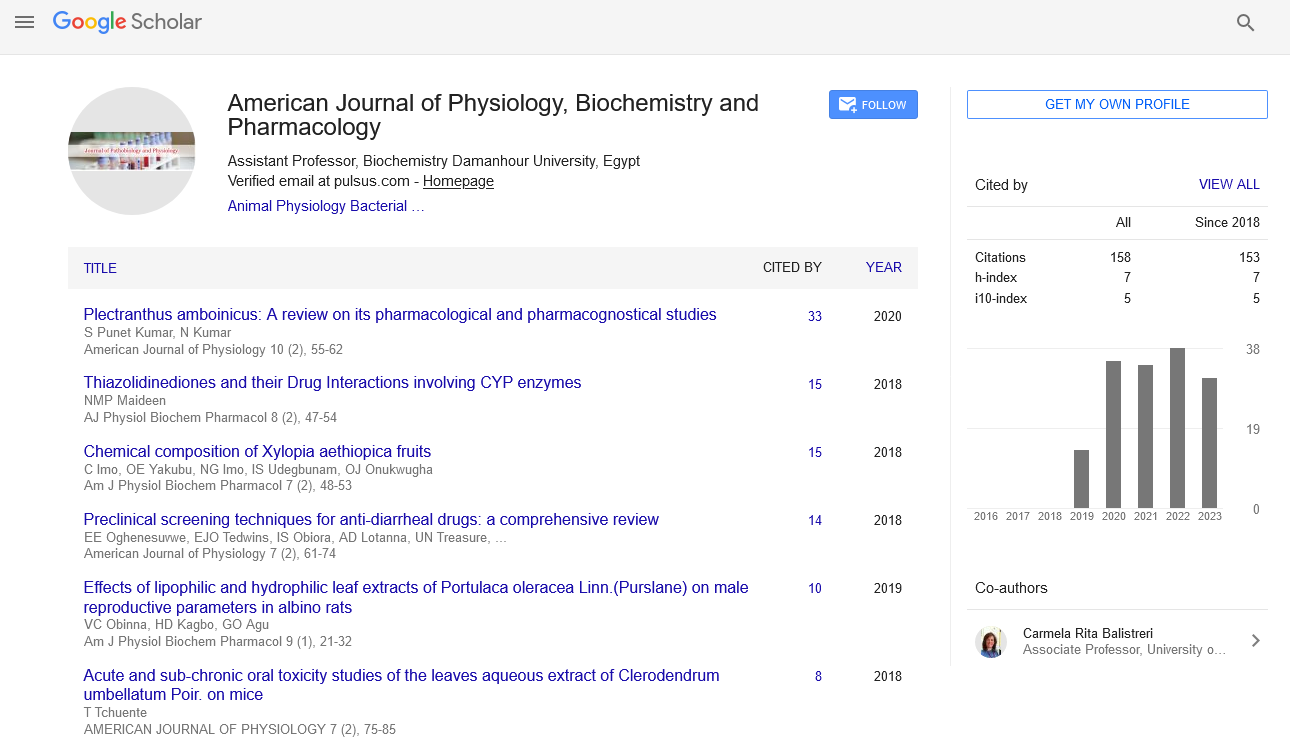Preclinical screening techniques for anti-diarrheal drugs: a comprehensive review
Abstract
Erhirhie Earnest Oghenesuvwe, Emudainohwo Joseph Oghenebrorie Tedwins, Igboeme Sabastie Obiora, Ajaghaku Daniel Lotanna, Ujam Nonye Treasure, Okezie Moses Ugochukwu, Ilodigwe Emeka Emmanuel
Diarrhea is a global epidemic mostly common in developing countries, especially among children below 5 years. The side effects posed by conventional anti-diarrheal agents necessitate the screening and development of alternative agents. This review assessed the current experimental techniques involved in screening agents with promising anti-diarrheal properties. The various models described include in vivo model (gastrointestinal transit time using charcoal meal, castor oil-induced diarrhea, castor oil-induced enteropooling, magnesium sulfate-induced diarrhea, prostaglandin (PGE2 )-induced enteropooling, and serotonin-induced diarrhea), intestinal enteroids model (enterotoxigenic escherichia coli-induced diarrhea, enteropathogenic escherichia coli-induced diarrhea, and cholera toxin-induced diarrhea) as well as ex vivo model (involving the use of isolated jejunum or ileum from guinea pigs, rabbits, and rats). Innovative screening areas covered include enkephalinase, intestinal ion channels, inflammatory bowel disease associated diarrhea and farnesoid X receptor target. Advantages and disadvantages of these techniques were also highlighted. Application of these models would aid researchers in the discovery of alternative anti-diarrheal agents.
PDF





